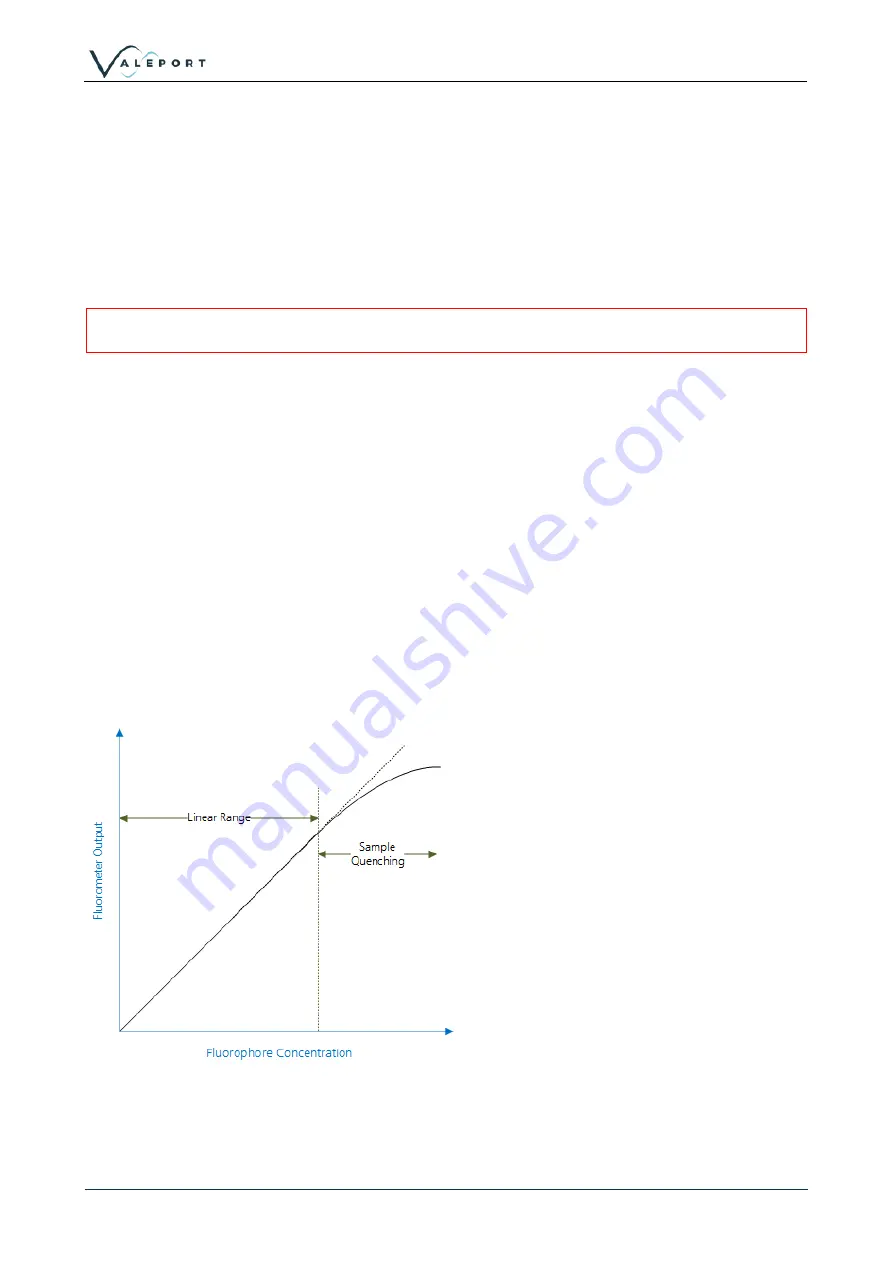
Section 2 | Sensors
©
2022
– Valeport Ltd
Page | 6
2.1.5.1 Safety Statement
A Hyperion Fluorometer is classified as Risk Group 1 under standard 62471. As the type is
classified as Risk Group 1 solely due to radiation in the visible band a hazard label is not required.
However,
The LED used is in excess of the Exempt Group and that the viewer- related risk is dependent
upon how the user installs and operates the equipment.
The exposure hazard value (EHV) for a Hyperion Fluorometer in terms of distance is 320mm
Never look directly into the optical aperture
2.2 Linear Observation Range
The linear range is the concentration range for which the fluorometer signal is directly proportional
to the concentration of the fluorophore. The linear range starts at the minimum detection limit
(MDL) and extends to the upper limit of the instrument (dependent on fluorophore properties,
optical filters, LED power, sample volume and optical path length).
Prior to November 2020 (Serial No: 75100) Hyperion Fluorometers had a calibrated linear
response for 2 gain settings (e.g. the ranges 0-40 µg/l (G5) and 0-800 µg/l (G1) for chlorophyll a).
Post November 2020, a single gain setting for full scale was introduced. At higher concentrations,
unlike analogue devices which generally flat-line at full-scale deflection (e.g. FSD 5V) the Hyperion
will continue to output a signal which increases with concentration (i.e. meaningful data), though
which is no longer guaranteed to be linear.
At very high fluorophore concentrations, signal quenching can occur, whereby the instrument
output does not increase linearly with fluorophore concentration (roll-off) and may decrease at
even higher levels.
To perform a quick linearity check, dilute the sample 1:1 with RO water. If the reading decreases
by 50%, the sample is in the linear range. If the reading decreases by less than 50% or even
increases, the sample is above the linear range.





















